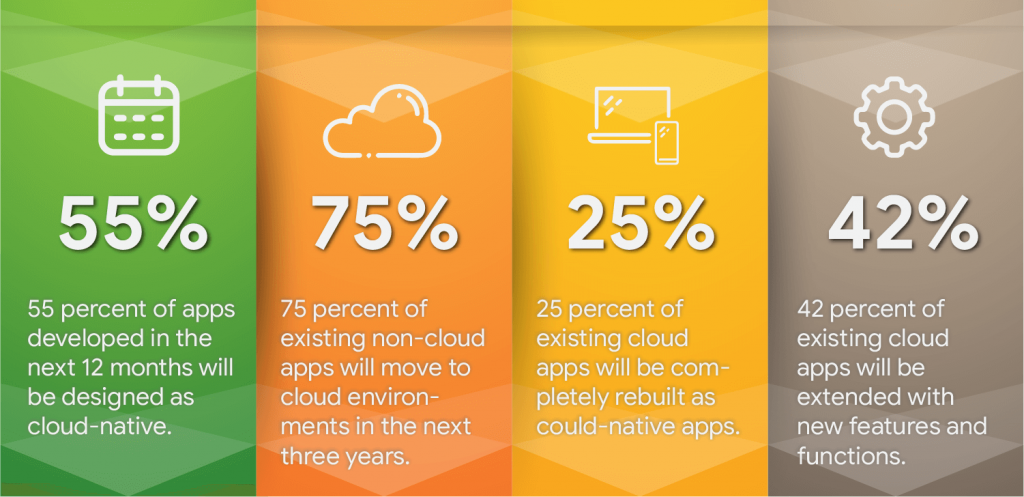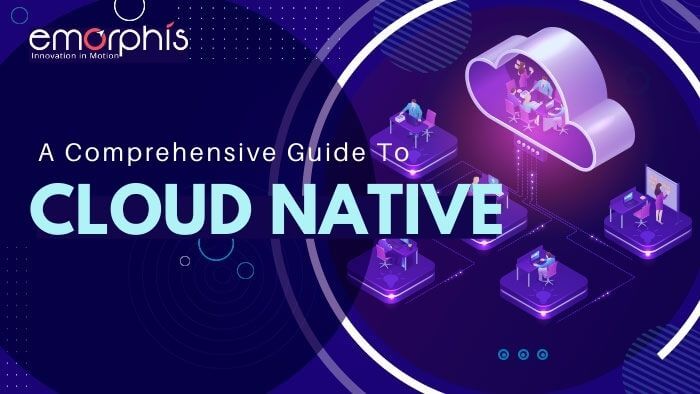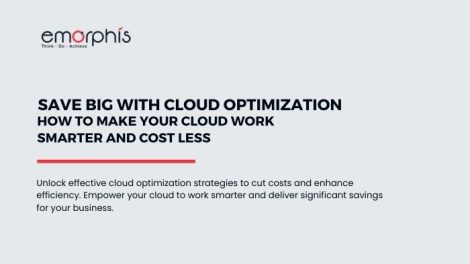Introduction
Before proceeding forward, there is a myth that needed to be debunked:
When we talk about cloud-native, don't think that we will just discuss cloud-only. It is not restricted to cloud infrastructure; it is much more than that. The given term is still misunderstood among tech lovers.
So, one must have knowledge that simply running on the cloud platform does not make an application labeled as cloud-native. It is a combination of numerous software and databases.
Now, how did it come into existence?
Thanks to the largest cloud computing operator, Amazon Web Services, cloud-native application development came into existence. It has grown so popular that organizations such as Cloud Native Computing Foundation (CNCF) are springing up to foster cloud-native platforms.
In the given article, we will discuss the concept of cloud-native, tools that support its environment, and how it will usher new phenomena in the world of cloud computing.
Let's venture more into it:
What is cloud-native infrastructure?
Infrastructure comprises operating systems, configuration management, data centers, and other aspects that offer the best support to the application life cycle. Here comes cloud-native infrastructure that plays a crucial role in the effective running of cloud applications.
So, cloud-native infrastructure is the amalgamation of hardware and software that runs and supports those apps that draw their energy from the cloud and only exist in the cloud environment. Besides, it also comes with notable characteristics:
- Easy automation with API driven procedure
- Auto-scaling and failover built into the environment
- Support CI/CD with continuous deployment cycles
- Support infrastructure as a code and repeatable deployment patterns
Why it is necessary? It's because if there is no presence of the right practice, even the best of the cloud-native applications is going to fail. To overcome it, enterprises are now implementing cloud-native infrastructure. If an enterprise wants to reap rich rewards from cloud technologies, it should incorporate them into its business on an immediate basis.
Building Blocks of Cloud-Native Infrastructure
Organizations must follow a simple yet progressive approach to building and operating cloud-native apps generally. Moreover, it is essential to incorporate cloud-native architecture principles to deliver the best quality products. Henceforth, there are four building blocks of a cloud-native architecture and are as follows:
i. DevOps
Indeed, it is the collaboration between developers and operational managers to deliver high-quality software apps to the customers. Similarly, it creates a culture where developing, creating, building, testing, and releasing the software is done more frequently and rapidly.
ii. Containers
They are an alternative way towards creating package applications. Unquestionably, they contain application processes and libraries with no need for operating systems. In fact, it requires fewer servers to run multiple application instances that help in a significant reduction in costs. Moreover, it also assists in better portability, faster deployment, and enhanced security.
iii. Orchestrators
After all the setting up of containers, there is a need for an orchestrator that helps them keep apps running all the time. It directs how to run, fix and determine what is needed in the container. Also, to sustain container orchestrators, Kubernetes is the clear winner. Eventually, it is there to handle most of the load balancing across the hosts and removing and re-spawning containers under the hood.
iv. Microservices
It is the last component that helps the running of apps more smoothly. With its assistance, it becomes easier for developers to create cloud-native apps at a faster pace. Dividing developers into smaller teams, app development is in the ownership of individuals who code the app without affecting another aspect of the given project.
The next step will help us to understand the whole environment under cloud-native computing apps.
What is a Cloud-Native Environment?
The environment of cloud-native applications is a simple yet challenging one. To make sense for everyone, we will attempt to explain its numerous parts by understanding how they work together. It comprises four architecture plans and all of them contain multiple technologies that assist developers to develop a continuously evolving cloud system. These are:
i. Application Software Development Layer
It is all about modeling domains, defining the role of Microservices in the cloud platform, their deployment, and application of software patterns to develop a continuously evolving system. In other words, we are talking all about patterns and communication technology between different applications.
ii. Service Scaling (Knative)
Service Scaling is also known as Knative autoscaling and comes into utilization by applications when there is a need to match the incoming command. This suggests that while the applications are not in use, resources will be properly optimized. It makes full use of cloud-native services and puts them to their maximum potential.
iii. Application Network (Service Mesh)
It is one of the commonest cloud-native architectures that have a wide presence in the microservices environment. With its presence, there is more uniform control by the enterprises among the communication that also increases chances of better observability. It is DevOps that utilize it to ensure high security, less failure recovery, and better rollout policies.
iv. Domain-driven Design (DDD)
There is a principle that is applicable when there is a development of the apps in the world of cloud-native transformation. Here, business users and developers can interact with each other effectively and set boundaries to segment complex business needs into fruitful ones. Amid all these, it has an important aspect; DDD works on continuous integration mode.
v. Agile Integration
It somewhat acts as a middleman among DDD and microservices. Besides, it lies at the top of the DDD that assists enterprises to define the app development concerning different functional concerns and even their physical deployment. Additionally, it has three crucial responsibilities:
a. Core:
This includes most of the microservice that either uses business logic or domain capability.
b. Composite
It's a procedure to direct any event from one place to other in a suitable format.
c. Control & Dispatch
It permits more insight into business control over the provision of the system.
In the next step, we will analyze the meaning of 'Native' in Cloud-Native.
What does Native mean in Cloud-Native?
The word 'Native' implies native application that is basically a software program that developers create so to make it usable for a particular device (or platform). Furthermore, a native app works on a particular operating system, it comes with a notable ability in the form of effective utilization of device-specific software. Correspondingly, it comes with outstanding benefits like offering the latest technology that comprises GPS and mobile cloud apps that function across multiple systems.
When mobile web apps are taken into the consideration, the native app is written to work on a specific device platform. There are two mobile OS platforms, including Google's Android and Apple's iOS. The codes for native apps function the same on every device and its platform. One notable example is an iOS application for Objective-C which also creates Android-native apps whose codes are written in Java.
Important Role Played by CNCF in Promoting Cloud-Native Apps
The CNFC is a vendor-neutral home of the Kubernetes (actually an open-source system for automated deployments). Cloud-Native DevOps with Kubernetes helps in easy management by scaling up the app with no need to add more resources to the operational team.
The major mission of CNCF is to create a sustainable ecosystem to support and manage containers for building cloud-native apps on Kubernetes. In addition, it also supports and hosts new cloud-native projects.
Likewise, CNCF helps in bringing numerous projects belonging to containers, micro-services, and other projects related to cloud-native space into one system. Consequently, CNCF offers several solutions stack or tools that are comprehensive in nature and include:
- Container Runtime
- Service Development (CoreDNS, gRPC)
- Management (OpenTracing, Fluentd)
Subsequently, these are evolving at a rapid pace by deployment, ease in use, and upgrades. Additionally, the solution stack of CNCF makes the transition to a cloud platform with comfort.
Above all, major cloud service providers have CNCF in their fold that ensures a high level of confidentiality among enterprises. Presently, they can take the help of the CNCF community to leverage cloud technologies to increase their fortune.
At last, comes several benefits of the Cloud-native solutions…
Advantages that come with Cloud-Native App
By all means, hereafter we will now go through benefits that come with a cloud-native environment. These are as follows:
A. Faster Release
Undoubtedly, DevOps plays an essential part as the transformation of software using automation (build, test, deploy) is done exclusively here. This is possible as cloud-native infrastructure offers full support to it.
B. Easy Management
Certainly, with cloud-native at the helm, there is not much effort is needed for infrastructure management. There is no need to worry about configuration networking and allocation of storage, all thanks to numerous serverless platforms such as the Azure function.
C. Cost Reduction
Containers in native apps help in the effective management of the applications independently and securely. Similarly, the presence of the Kubernetes helps in the effective management of the resources in the cloud.
D. Reliable System
The utilization of approaches such as Kubernetes and microservices helps in creating fault-tolerant and self-healing setup. Even during the event of the failure, it can isolate and does not impact entire applications.
Conclusion
Therefore, one thing is clear for the reader cloud-native applications are gaining fame day by day. There is no denying that cloud-native apps will help in building secure and powerful software development services, especially for IT companies.
In addition, cloud-native applications are fully automatic and come with high-tech that yearns for the rapid technological revolution. Further, the evolution of CNFC helps in fostering easy management of the project and creates a suitable environment to help companies in adapting to new changing approaches efficiently.
Last but not the least, there are several crucial facts about cloud-native applications that are needed by the users to go through it:

Source: IBM Cloud-Native Development Report







